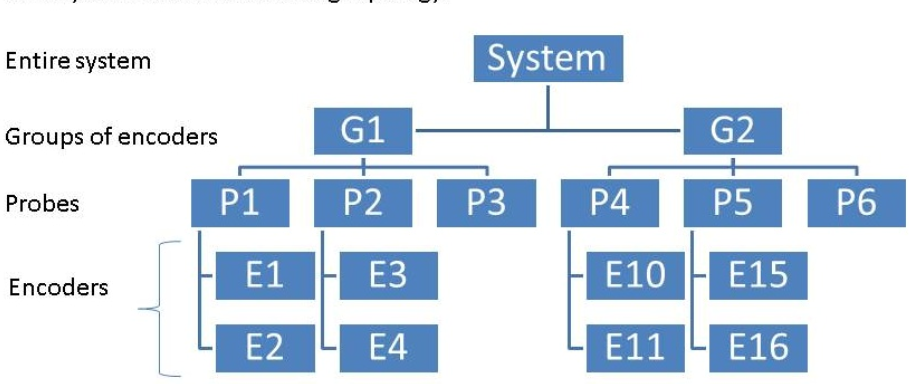System architecture¶
The central server is the heart of the Volicon Media Intelligence service. It has an overarching responsibility for all aspects of the system. Depending on size, the Volicon Media Intelligence service will utilize one or more probe servers. The responsibility of the probe is to ingest and store programs. The probe utilizes capture cards to enable Volicon Media Intelligence service to interface with various program sources.
The Volicon Media Intelligence service probe ecosystem is organized in a hierarchal manner. There are several layers that make up the entire system: bouquets, groups, probes and encoders.
Bouquet(s): This refers to logical associations of streams independent of location.
Group(s): This level associates multiple probes under one unified heading. Groups can be created by input source, geography, network capture location, etcetera.
Probe(s): Each server, as a whole unit, contains anywhere from 1 to 16 video, audio and metadata capturing inputs/channels. It stores all the recorded content locally and streams out the recorded content to end users.
Encoder(s): This is the proxy copy created for each item of video content recorded on the system. In the case of Volicon Media Intelligence service, it is a direct one-to-one relationship of each physical video input on the probe to the proxy stored on the probe.
You must assign each probe server in the system to a probe group. Use groups to help you organize your streams and manage alerts, since a probe group often shares a geographical territory or a specific service area.

Figure: Probe architecture¶